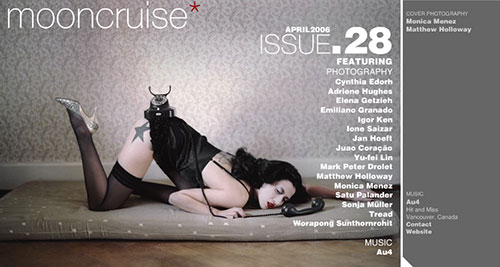The April 2006 issue (28) of mooncruise*, an online magazine featuring photography and music by international artists, is now up and ready for viewing.
In this issue
PHOTOGRAPHY by: Cynthia Edorh, Adriene Hughes, Elena Getzieh, Emiliano Granado, Igor Ken, Ione Saizar, Jan Hoeft, Juao Coraçäo, Yu-fei Lin, Mark Peter Drolet, Matthew Holloway, Monica Menez, Satu Palander, Sonja Müller, Tread, Worapong Sunthornrohit
MUSIC by: Au4
mooncruise.com (requires Flash 6)
